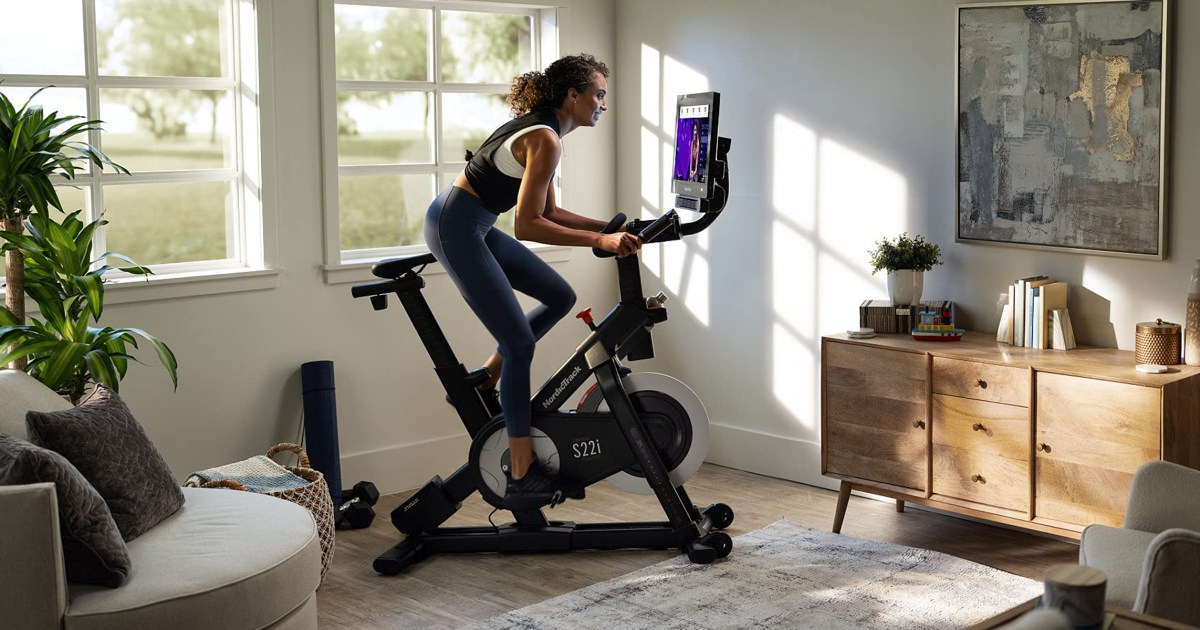

When high blood pressure is a deadly diagnosis
In a nation plagued by high blood pressure, Black people are more likely to suffer from it. A yearlong AP project found that from birth to death, Black Americans are more likely to get sick and die from common ailments. (May 23) (AP video: Noreen Nasir)
AP
Exercise offers a host of health benefits that range from strengthened muscles and bones to lowering cholesterol levels. Research shows that proper workouts can also build confidence, improve mental health, and help manage chronic health conditions.
But perhaps the top benefit of regular exercise is that it’s good for your heart and significantly reduces your risk of heart disease. It does this, in part, by lowering your blood pressure. “Regular exercise makes the heart stronger, which has many benefits including improved blood pressure,” says Natalie Allen, MEd, RDN, a clinical associate professor and a team dietitian in the athletics department at Missouri State University.
And an extra plus is that you a common form of exercise − walking − may be the best tool in your arsenal for lowering blood pressure.
Does exercise lower blood pressure?
In other words, exercise can lower one’s blood pressure – especially in individuals who do it often. “Those who engage in regular exercise tend to have lower blood pressure than those who live more sedentary lifestyles,” says Kelly Jones MS, RD, CSSD, a performance dietitian and owner and founder of Student Athlete Nutrition. One caveat of this is that exercise doesn’t lower blood pressure while you’re working out because blood pressure actually increases during exercise to supply your muscles with the additional oxygen and blood flow they need. But once your heart rate returns to normal following the workout session, the benefits of prolonged exercise can be experienced.
It’s also important to keep up with exercise to prevent blood pressure from rising again. High blood pressure, also called hypertension, can cause the arteries that supply blood and oxygen to the brain to burst or be blocked, causing a stroke, per The Centers for Disease Control and Prevention. Heart attack, heart failure, type 2 diabetes, kidney disease, and chest pain are other potential dangers associated with high blood pressure.
How does exercise affect blood pressure?
Exercise impacts blood pressure a number of different ways. One way is that regular exercise pushes the cardiorespiratory system to more efficiently deliver oxygen and nutrients to exercising muscles, which can help keep blood pressure levels normal, explains Jones. She adds that the increased movement of exercise-related blood flow can also “pick up, metabolize, and remove fat, cholesterol and other substances that have narrowed the space in your veins.” That removal, along with subsequent reductions in inflammation due to more regular exercise, “means more space for blood flow and therefore less pressure needed to move substances in the blood efficiently,” she says.
It’s a process that “trains the heart to pump with less effort,” says Lori Shemek, PhD, a certified nutritional consultant based in Dallas and author of “How to Fight FATflammation.” She adds that exercise also causes the body to release nitric oxide “which causes blood vessels to open wider for reduced force on the arteries and better blood flow.”
Another related benefit of working out is that exercise causes us to sweat out some of the sodium in our bodies, “and excess sodium can cause high blood pressure in some individuals,” says Jones.
And the benefits of exercise related to blood pressure aren’t nominal. “Research shows regular cardio exercise can effectively lower blood pressure by 5-8mm Hg,” says Allen. (Blood pressure is measured in millimeters of mercury, or mm Hg.) For context, a normal blood pressure reading should be less than 120/80 mm Hg and hypertension begins when one’s blood pressure reaches the 130–139/80–89 mm Hg range. So, a decrease in 5-8mm Hg can mean the difference between normal and elevated blood pressure.
Which exercise is best for lowering blood pressure?
The best part is one’s exercise doesn’t have to be intense to reap these benefits. “You don’t have to spend hours at the gym or run a marathon to lower blood pressure,” says Shemek. She points to research that shows that walking just 3,000 steps a day can effectively lower blood pressure. Any other activity that gets one’s heart rate up can also help, but Shemek explains that cardio isn’t the only way to lower blood pressure. “Recent research shows exercises that engaging muscles without additional movement such as squats and planks may be best for lowering blood pressure,” she says.
In addition to getting plenty of exercise, one’s diet plays a major role in preventing hypertension. Eating healthy is important for healthy weight management and obesity causes one to be nearly twice as likely to develop high blood pressure. Diets like the National Heart, Lung and Blood Institute’s DASH diet can also make a big difference by delivering key nutrients and avoiding foods associated with hypertension. DASH stands for Dietary Approaches to Stop Hypertension. It’s a diet that’s rich in fruits, vegetables and lean proteins and also limits sodium. “This diet has been well studied and research shows the nutrient make-up is critical to manage hypertension,” says Allen.
Through healthy eating, regular exercise and avoidance of problematic behaviors, one can keep hypertension at bay. “A sedentary life, poor food choices, too much stress and inadequate sleep quality,” explains Shemek, “are all things that will increase your blood pressure.”
How to lower blood pressure: What you need to do to avoid heart problems







